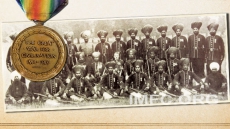Yoga’s literal meaning in Sanskrit is ‘union’ and there are various dimensions to seek this union with the oneness of existence that yoga propagates.
Yoga has become one of the most heavily commercialized movements in the world today. From cars and gadgets to food and clothing supplies, everything is marketed under the name of yoga. Certainly, the commercialization has extensively extended yoga’s reach across different regions and demographics, however its sudden transformation into a profit-holding entity has distorted the ancient practice, confining the body, mind and soul, into a tagline, and merging yoga gear as a co-dependent on the otherwise self-transformative journey.
The last decade alone has seen a significant boom in the accessibility of yoga through various platforms, blogs, videos, studios and gyms. However, the sudden surge in its accessibility has also exposed us to incomplete and distorted definitions of the complex ancient science that requires immense patience and practise to master, and which if not pursued under expert guidance, can lead to grave consequences. “Yoga needs to be handled in an extremely committed atmosphere because it is a tremendous tool for transformation.
If something has the power to transform, it also has the power to cause damage if mishandled,” says Sadhguru Jaggi Vasudev, a yogi, mystic, contemporary Guru and founder of Isha Foundation.
Giving insight on the complexity of the practice, Sadhguru explains, “Yoga is not a morning-evening kind of practice. There is a practice but that is not the only aspect. Every aspect of your life, the very way you walk, breathe, interact – everything should become a process of yoga.” This notion of everything is what the capitalist society has been basking on in recent times, distorting it into physical commodities and commercializing wildly through various adaptations such as pool yoga, beach yoga, cat yoga, naked yoga or something emerging recently- goat yoga.
Yes, these adaptations provide more accessibility to a wider set of audience but accessibility can be misleading and whether it’s taking us closer to or further away from the ancient science of yoga is something we need to consider. I ask Sadhguru how emergence of these new adaptations affect the practice of yoga. “There will always be an enterprise around whatever becomes reasonably popular. We shouldn’t be distracted or disturbed by these. Are they teaching it properly? There are question marks about it. Some of them are teaching it properly, some are not. These manifestations are a result of the commercial process. But it is only on the surface that these distortions are happening here and there. The core of yoga is not disturbed in any way.”
But what stands at the core of the yoga? Where does a novice begin, who does he/she listen to and how shall he/she set their journey towards the path of yoga? “Yoga is not something that you do. Yoga is something that you become. It is not an act, it is a quality.
If you cultivate your body, mind, emotions and energies to a certain level of maturity, a certain quality arises within you. That is yoga. Do the practices bring that quality? Definitely, but we do not teach it as some kind of an act that you do only for a few minutes a day,” explains Sadhguru.

Yoga’s literal meaning in Sanskrit is ‘union’ and there are various dimensions to seek this union with the oneness of existence that yoga propagates. Asanas or postures are one of those dimensions to elevate consciousness and seek balance of the mind and body. This leads to the next big question: with so many yoga gurus, how do you identify who is right for you? Isn’t the value of yoga based on the authenticity of the master? “There is no such thing as a true guru and a false guru. It is just that there are ‘spiritual entrepreneurs’” explains Sadhguru and advices to evaluate- “What is offered to you, put it into your life – if it works, keep it, if it doesn’t work, throw it and look for something else.”
Of course, there are people who seek yoga simply for its physical and psychological gains. For them, Upayoga, fulfills the initial transition into yoga with its easy-to-follow postures and a comparatively flexible level of commitment. Isha foundation has a set of Upayoga exercises which can easily be incorporated into your morning routine. “Upa-yoga is a safe way to take yoga to the world at large-scale. Once people experience the benefits, they will naturally seek yoga in a more serious manner, and that is when yoga should come into their lives.”
The physical and spiritual journeys of yoga intersect but the two roads lead to the same destination. Within yoga and meditation, the mind and body become the protagonist, taking the reigns of control from our senses and preventing them from going astray. Mind and body should not be in opposition, rather unified to perceive and respond to the world in unification. “If you take care of your garden well, there are flowers. In the same way, if you take care of what you call “myself” well, flowers will bloom. That means, being peaceful, happy or joyful is not determined by anything outside of you, it is determined by you. This is something that every human being must do to himself. Yoga is a subjective tool for this to happen.”








